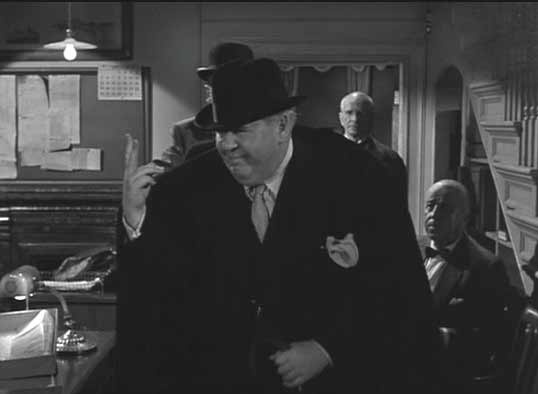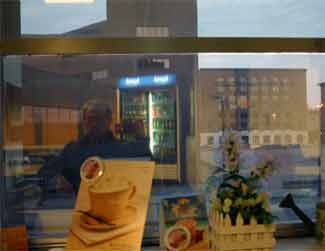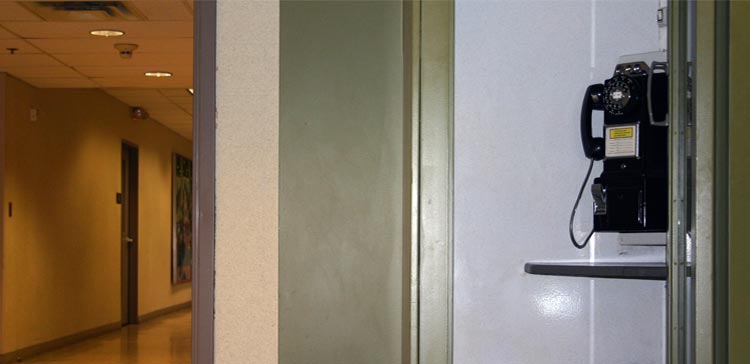|
|
|
|
|
|
|
|
|
|
|
|
|
|
|
|
|
|
|
|
|
|
|
| Su |
M
|
T
|
W
|
Th
|
F
|
S
|
|
1
|
|
|
|
|
|
7
|
|
8
|
|
|
|
|
|
14
|
|
15
|
|
|
|
|
|
21
|
|
22
|
|
|
|
|
|
28
|
|
30
|
|
|
|
|
|
|
|
|
|
|
|
>> |
|
|
|
|
|
Attended a party at the Walker Art Museum on Saturday night – the Skyline room, catered by Wolfgang Puck himself. And because I move in such circles, it means I am better than you. Hell, I’m better than myself. I had to thrash my reflection in the mirror today for the sheer effrontery of looking at me. Cheeky bastard.
Actually, my wife knew the party-tossers from way back, and they’re very down-to-earth people. As opposed to those who float nine inches above the pavement, I guess. They had Wolfie as a client, and hence the appearance of his food. What made the party interesting was the venue; this was my first visit inside the Walker, the exterior of which I drubbed in a column last year. Others have noted that the interior is, well, somewhat confusing – and this would seem to suggest that the building is disappointing in the two ways that count – the outside and the inside. Other than that, though, it’s spectacular.
I didn’t know what to expect, but wasn’t surprised: jagged cut-outs in the wall that form useless windows, walls with angles from a Nosferatu set. Most surprising: the party room had the most atrocious acoustics of any venue I’ve attended – put in 20 people and a turntable, and it sounded like a steel-walled Ceramic-dish-smashing facility. No one could hear anything, so they talked louder – the crowd didn’t fill one 20th the space, but it sounded like the room held 500 people. What’s more, the higher frequencies were amplified and reflected, so it was actually the most painful room I’d ever been in. If they’d chained me to a hook on the floor I would have confessed to anything. Even being insufficiently impressed with Wolfgang Puck. Or rather the concept of. I mean I’m sure he’s a nice guy and I like the food, but he’s not God. Go ahead, flush the cookbook down the commode. You're not getting anything out of me.
People have complained about the deafening accoustics, apparently; someone told me the Walker is working on dialing down the room’s gawdawful din-factor. Good. Now if they could do something about the stairway to the loo. It’s broad and long; you feel like you should have a Max Steiner score to accompany you as you ascend. But on the way down, a curious thing happens. Imagine this: to your right, the wall of the building. To your left, a low wall with a railing. Below, the landing. The wall on your left, when it joins the landing, angles up to the ceiling. This gives you the impression that you are heading into a dead end – one with toilets, granted, but a dead end nonetheless. Your ancient led-by-error-into-a-cave instinct flutters in the back of your head, and you have to resist the temptation to get a good grip on your spear. But! When you reach the landing, you see that the stairs actually do continue down to the floor below. In other words, the idea that these stairs do not continue down is an illusion.
How damnably clever, no? You bourgeois cows with your staircase-expectations and your gross American guts filled with lager-piss! We spit on your presumptious! Perhaps. But you know, when people take stairs, they like to know where the stairs go. Even if they’re not going there right now. Granted, the illusion lifts the moment you turn the corner, and I suppose this could be seen as a clever way to upend our preconceptions, provide a small little moment of architectural subversion. You thought a staircase system should provide such-and-such? Well, this one does not. Discuss! Even the act of finding the can has become Art. No small moment goes unchallenged.
The plumbing appears to work, though; capital water pressure, just capital.
Watched “Midnight Cowboy,” which I’d never seen. I knew the score, having bought it for a buck in the Woolworth cut-out bins when I was 12. It has two themes – “Everybody’s Talkin’ At Me,” which is used about 893 times in the first 10 minutes, but used well; it just fits. And there’s the John Barry theme, which is much lonelier and bereft than the Nilsson-sung song. (Contains harmonica, and that's why; nothing beats harmonica for mournful simpleton sadness. It's the anti-banjo. Take a harmonica and a banjo, have them play the same notes - they'd cancel each other out, and you'd hear nothing but silence. Which, if you'd announced there would be a banjo-harmonica duet, would be fine for most people.) As for the movie, it was ten times better than I thought it would be. Remarkable: all those annoying ticks of 60s filmmaking were finally perfected into something coherent. The montages, the flashbacks, the split screens, self-conscious rack focuses, the rambling narrative and picaresque plot – here it works. Let me be the nine-billionth person to remark on the exceptional acting of the principals, note that the Times Square the movie describes is mostly gone, observe that the 1969 America displayed in the film is almost universally shabby and depressing or false and hollow. Right. But:
1. There’s a scene in a movie theater where Joe Buck’s submitting to the groinal osculations of a young Bob Balaban; a sci-fi movie is playing on the screen, complete with Ironic Counterpoint Dialogue and Imagery; the score for the movie-in-a-movie is a peculiar reworking of John Barry’s space themes from James Bond movies, “You Only Live Twice” in particular. I mention this because I can. And also because Dennis Prager plays daily a bumper music excerpt from the Propellerheads, never telling anyone that it’s not only Shirley Bassey who sings the song, but that the album contains a brilliant mash-up of John Barry Bond music that might quite possibly explain what he professes not to understand, i.e., why some people like music that is defined primarily by the beat.
But I digress.
2. There was a rule in the 60s that all movies had to contain at least one Happening. A Happening was invariably held in a cavernous apartment at night; girls in miniskirts danced against white sheets on which lava-lamp globules were projected; the men were either arch aesthetes with goatees and black glasses, or young grinning beef jerky; the women were either aloof fashion icons or groovy with-it chicks who, if approached from the side, would inevitably hand you a freshly-lit joint. Straight hair, center part, headband, round glasses. In the Happening the camera would tilt from side to side, and zoom in and out rapidly, to give the impression that you, the middle-aged guy who spent four bucks on a babysitter so you and the wife could get out for a change, were actually in a Pad somewhere having a Trip. The bad thing about a happening was that it never advanced the plot an inch; the good thing was that you frequently saw big Swedish boobs for a second. That would be something to tell the guys on Monday.
Also watched “Witness for the Prosecution,” a British courtroom drama based on an Agatha Christie novel; Charles Laughton and his jowls star, along with Marlene Dietrich as a woman composed entirely of dry ice, and the ever unlovable Elsa Manchester as a bug-eyed nurse. Fairly ordinary stuff, but it has one of those nineteen-twists-at-the-end conclusions that makes it rewarding. What caught my eye was a scene in which Laughton, a famous barrister, has decided to head out to a train station to meet a woman who may or may not have evidence that will break the case wide open! Even though he has been advised by his doctor to avoid exertion and tobacco, he bursts from the room and holds up his hand in the universal gesture of a man who requires his underlings to plant a cigar betwixt his flesh digits. The image is not a mistake, and it’s one of those icons that must have struck the British viewer as amusing and deeply satisfying:

Winnie redux.
Saturday afternoon I picked up Gnat from a birthday party. Ten oversugared screechy little girls; nothing happier in the world than that. One of the parents asked which was mine, and I answered, stupidly, “The one in pink.” Yeah, that narrows it down. Then she went off to a sleepover. I drove home in the twilight, and passed the office; thought I might stop in and take some pictures while no one was around. Tried to get a good shot of the place where I write in the afternoon, so you can see the bleak and unchanging view, but it didn’t quite turn out.

I’ll try again. I also took a few shots of the phone booth. The mysterious archaic phone booth you saw at the top of this page. It’s on t he 2nd floor, next to the coffee shop where I write. It's a rotary phone with an old folding door, a switch for the fan. It has survived every renovation.
Sometimes it rings.
-----------------
(New matchbook, Quirk, and Screedblog.)
|
|
|
|
|
|
|
|
|
|
|
|
|
|
|
|
|
on Monday
|
on Tuesday
|
Mon-Sat
|
|
. |

